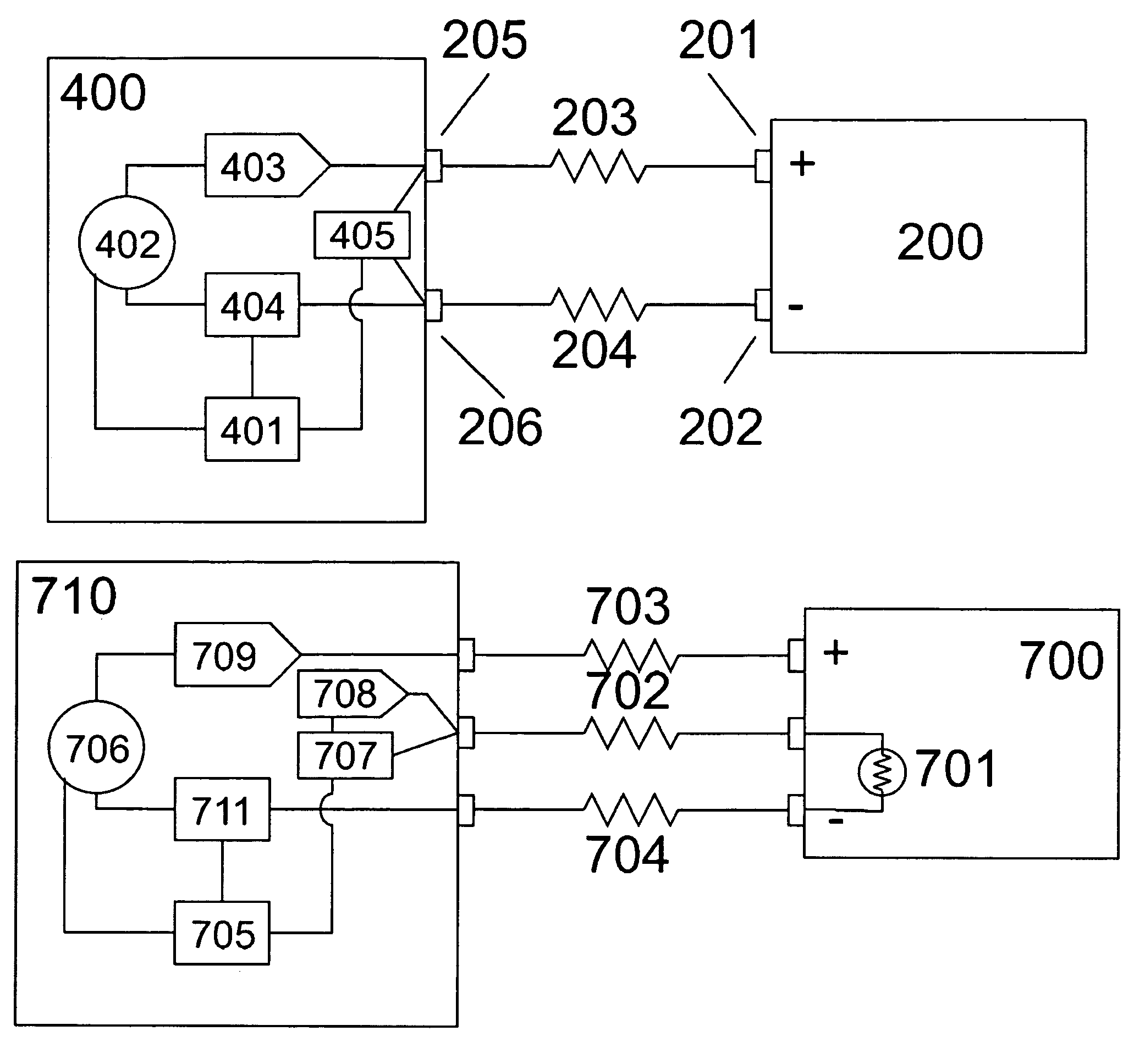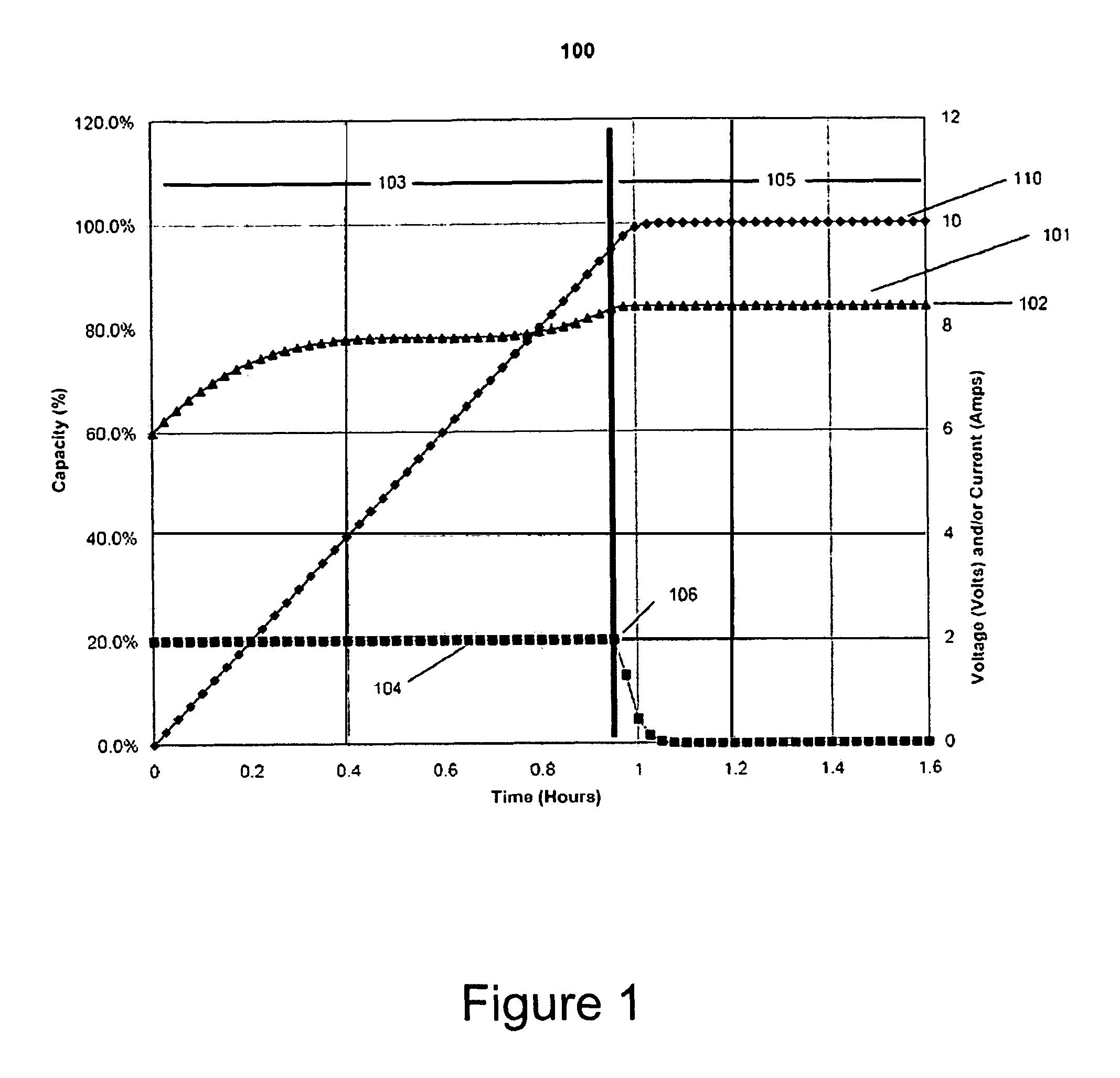Remote battery charging system with dynamic voltage adjustment and method of use
a charging system and battery technology, applied in electrical equipment, transportation and packaging, electric vehicles, etc., can solve the problems of charging being disabled, not as good as an ideal four-wire sensing system, etc., and achieve the effect of increasing the overall safety and reliability of the system or remaining unchanged
- Summary
- Abstract
- Description
- Claims
- Application Information
AI Technical Summary
Benefits of technology
Problems solved by technology
Method used
Image
Examples
Embodiment Construction
[0030]Referring to FIG. 1, a graph (100) showing ideal charger performance when connected to a lithium battery. In this case the output voltage Vo (101) of the charger is exactly the same as the voltage present on the battery terminals VBatt (101). In the case of a two-cell Lithium Polymer battery where the end-of-charge voltage is 8.4 volts (102), the desired maximum charge rate is 2 amps and the battery capacity is 2 amp-hours, the graph shows what characteristics make this an ideal charger.
[0031]The graph is divided into two sections. In the Constant Current (CC mode) section (103), the battery voltage is lower than 8.4 volts so the charge current (104) will be exactly 2 amps. Once the battery reaches 8.4 volts the system enters Constant Voltage (CV mode) (105). In an ideal case a “knee” is formed (106) in the graph where the charging current Io immediately and rapidly begins to fall. This happens at the point where the battery voltage (101) reaches 8.4 volts. The total charge ti...
PUM
 Login to View More
Login to View More Abstract
Description
Claims
Application Information
 Login to View More
Login to View More - R&D
- Intellectual Property
- Life Sciences
- Materials
- Tech Scout
- Unparalleled Data Quality
- Higher Quality Content
- 60% Fewer Hallucinations
Browse by: Latest US Patents, China's latest patents, Technical Efficacy Thesaurus, Application Domain, Technology Topic, Popular Technical Reports.
© 2025 PatSnap. All rights reserved.Legal|Privacy policy|Modern Slavery Act Transparency Statement|Sitemap|About US| Contact US: help@patsnap.com



